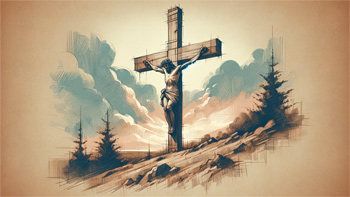The crucifixion of Jesus Christ stands as one of the most significant events in human history, revered by millions across the globe. This pivotal moment, which is central to the Christian faith, transcends religious boundaries, touching the hearts and minds of believers and non-believers alike. The narrative of Jesus’ passion, death, and resurrection has not only shaped religious thought but has also profoundly influenced art, culture, and the recognition of global holidays.
The story begins in Jerusalem over two thousand years ago. Jesus of Nazareth, a figure now central to Christianity, was condemned to die on a cross—a method of execution reserved for the most serious of offenders. The events leading up to His crucifixion are commemorated during Holy Week, beginning with Palm Sunday, which marks His triumphant entry into Jerusalem.
The Historical Account of the Crucifixion
Historical records from the period detail the trial of Jesus, a tumultuous affair involving both Roman and local authorities. Charges were brought against Jesus for sedition against the Roman Empire, claiming to be the King of the Jews, and blasphemy. He was brought before Pontius Pilate, the Roman governor of the region. Despite Pilate's initial reluctance, political pressure and the outcry of the crowd led to the fateful decision to condemn Jesus to death by crucifixion, a punishment reserved for the most serious of crimes.
The execution method was as brutal as it was public. Jesus was subjected to scourging before being forced to carry his cross to the place known as Golgotha. There, he was nailed to the cross and left to die, a spectacle intended to serve as a deterrent to others who might challenge Roman authority. Yet, in his final moments, Jesus spoke words of forgiveness, leaving a legacy of compassion that would echo through the millennia.
The Observance of Jesus’ Crucifixion Around the World
Today, Good Friday stands as a day of profound reflection and mourning within the Christian faith. It is a day when the faithful gather to remember the suffering and death of Jesus, often observing rituals that include the veneration of the cross and readings of the Passion narrative. This day of solemn commemoration is part of the larger observance of Holy Week, which culminates in the celebration of Easter Sunday, marking Jesus' resurrection.
The crucifixion is not only a moment of deep sorrow but also the precursor to a profound joy for many believers. The resurrection is celebrated as a victory over death, offering hope and the promise of life everlasting. This cycle of mourning and rejoicing has given rise to rich traditions across cultures, each infusing the observance with its own unique character.
The Crucifixion’s Cultural and Artistic Influence
The crucifixion has profoundly impacted the arts, serving as a poignant subject for painters, sculptors, writers, and composers throughout the centuries. The image of the cross, once a symbol of shame and suffering, has been transformed into one of the most potent symbols of faith. From the great cathedrals of Europe to the simplest chapels, the cross stands as a testament to the transformative power of Jesus' death and resurrection.
It's not just in religious contexts that the crucifixion has made its mark. The narrative has influenced countless works of literature, music, and film, shaping the broader cultural dialogue about themes of sacrifice, love, and redemption. The story of Jesus' final hours continues to inspire new interpretations and expressions, demonstrating the enduring power of this ancient story to speak to the human condition.
The Enduring Legacy of the Crucifixion in Modern Times
In contemporary society, the crucifixion is remembered and revered not just within the bounds of religious observance but also in the broader context of historical and cultural significance. Educational institutions, museums, and public forums often engage with the crucifixion's themes, exploring its impact on civilization and its role in shaping moral and ethical discourse.
As the narrative of the crucifixion continues to be a source of inspiration and reflection, its message resonates beyond the confines of time and geography. From solemn church services to public art exhibits, from academic treatises to community outreach, the crucifixion of Jesus Christ remains a central narrative, a moment in history that continues to shape and define the human story.
